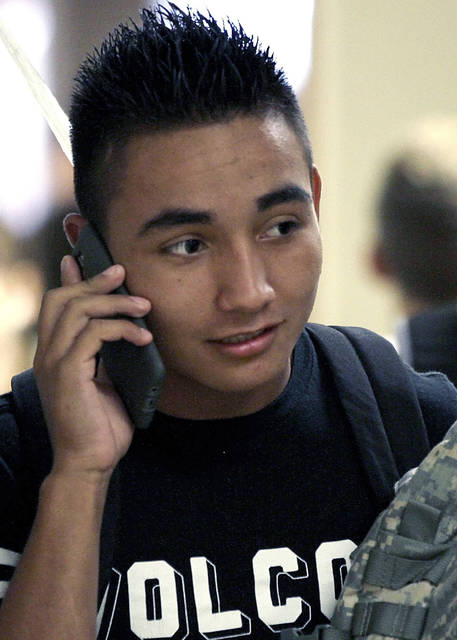BUFFALO, N.Y. — Cellphones are still absent from most U.S. schools but new data shows them steadily gaining acceptance as administrators bow to parents’ wishes to keep tabs on their kids and teachers find ways to work them into lessons.
The percentage of K-12 public schools that prohibited cellphone use was about 66 percent in 2015-16, down from more than 90 percent in 2009-10, according to data from a survey conducted by the National Center for Education Statistics. Among high schools, the shift over the same period was especially striking — dropping from 80 percent with bans to 35 percent.
The nation’s largest school system, New York City, is among those that have abandoned strict bans, which had some students paying $1 a day to store phones in specialty trucks parked nearby before heading into school. Mayor Bill de Blasio fulfilled a campaign pledge when he lifted the ban in 2015, saying it would help parents stay in touch with their children.
Phones have offered a lifeline between students and the outside world during recent school emergencies. As a gunman rampaged through Marjory Stoneman Douglas High School in Parkland, Florida, on Feb. 14, students used cellphones to text their parents, call 911 and to record and share their horror.
The survey numbers released last week don’t surprise Liz Kolb, an education technologies professor at the University of Michigan who has studied cellphones in schools since around 2004. At that time, phones were off limits in virtually every district, she said. That began to change as more students, as young as age 10, began carrying them.
“We’ve seen a lot of schools say, well, I’m not going to fight the tidal wave of parents coming at me that are upset that their child can’t have the cellphone in school,” Kolb said.
Teachers also are taking advantage of the technology at a time when many districts are spending millions of dollars to give students access to tablets or laptop computers and their countless academic apps and programs, she said.
“There are teachers who have found that having the cellphone is like having a computer in your pocket, so it’s a way to have another learning tool at the disposal of the children that isn’t necessarily costing the district more money,” she said.
Students might download a dictionary app for English or use Google Translate in foreign language classes. Other apps, like Kahoot!, connect to the classroom’s smart board and allow students to compete in educational trivia.
Still, some school districts are moving in the opposite direction. The school board in Mansfield City, Ohio, last year tightened its policy, requiring the devices be turned off and out of sight in classrooms unless the teacher says otherwise.
“The cellphones were a distraction,” Superintendent Brian Garverick said. “When you have a device with the capabilities of an iPhone, for example — and it’s not just in our district, it’s everywhere — you see an increase in cheating, you see an increase in texting during class.”
In Connecticut, Seymour High School Principal Jim Freund said despite teachers’ best efforts to limit cellphone use to lunch and other non-instructional times, students were still playing games or on social media when they shouldn’t have been.
“I don’t think they had the maturity level to control it,” Freund said.
The school imposed a strict ban in December. Since then, students have reported getting more work done in study hall and the cafeteria has grown louder as students talk to one another more, he said.
“I will never go back — ever — to allowing the use of cellphones,” Freund said.
Even in schools that have lifted bans, administrators and experts say, the policies for use vary widely.
“You see districts struggling with, now that we’ve lifted the ban, how do we manage this and create policy so that it isn’t distracting but it is still a useful communication tool or useful learning tool,” said Kolb, author of “Toys to Tools: Connecting Student Cell Phones to Education.” Even within schools, she’s seen cellphones create tensions between teachers who allow them in class and those who don’t.
New York City’s policy empowers each school to set terms for their use, while the Department of Education’s written policy includes broad guidelines, including that they not be turned on or used during quizzes or tests, or during fire or other emergency drills. Use in bathrooms and locker rooms is also off limits.
New York City parent Mona Davids said her son’s school requires phones be turned off in class, but she was happy the fourth-grader was allowed to carry it when his school bus broke down and made him late getting home.
“He let me know he’s on the bus,” she said. “That’s important. It’s a safety issue.”
———
Associated Press data journalist Larry Fenn in New York contributed to this report.




